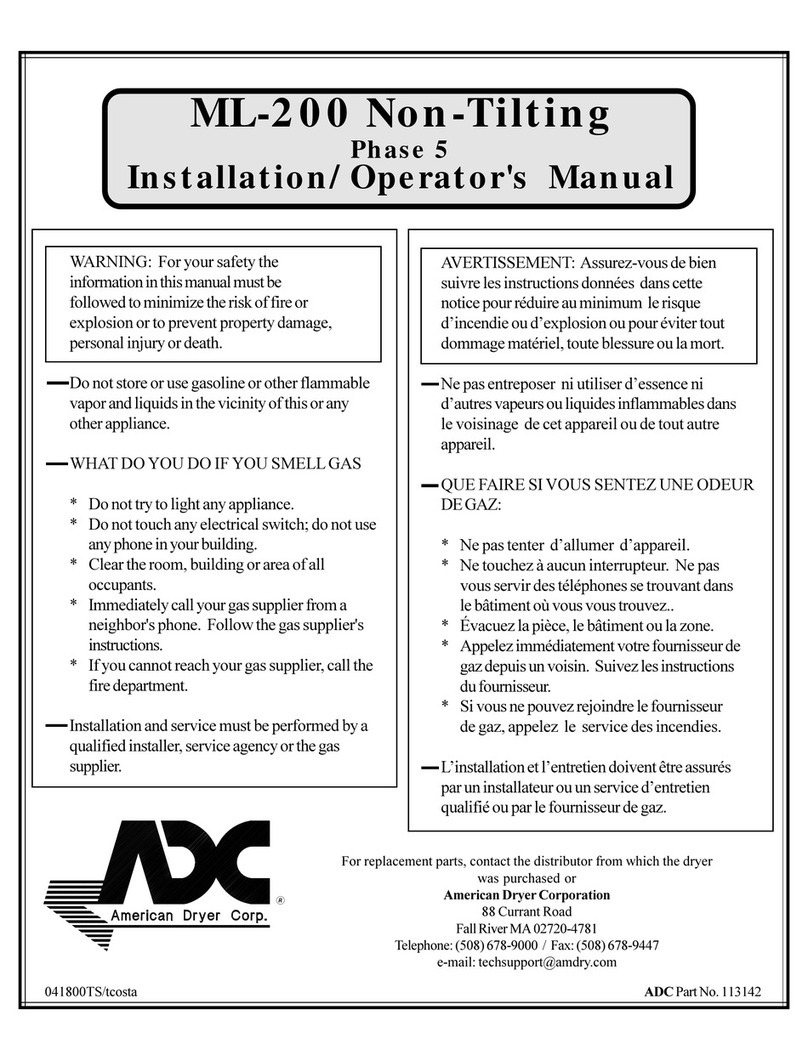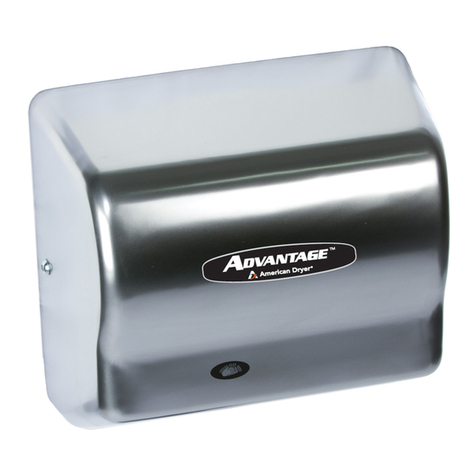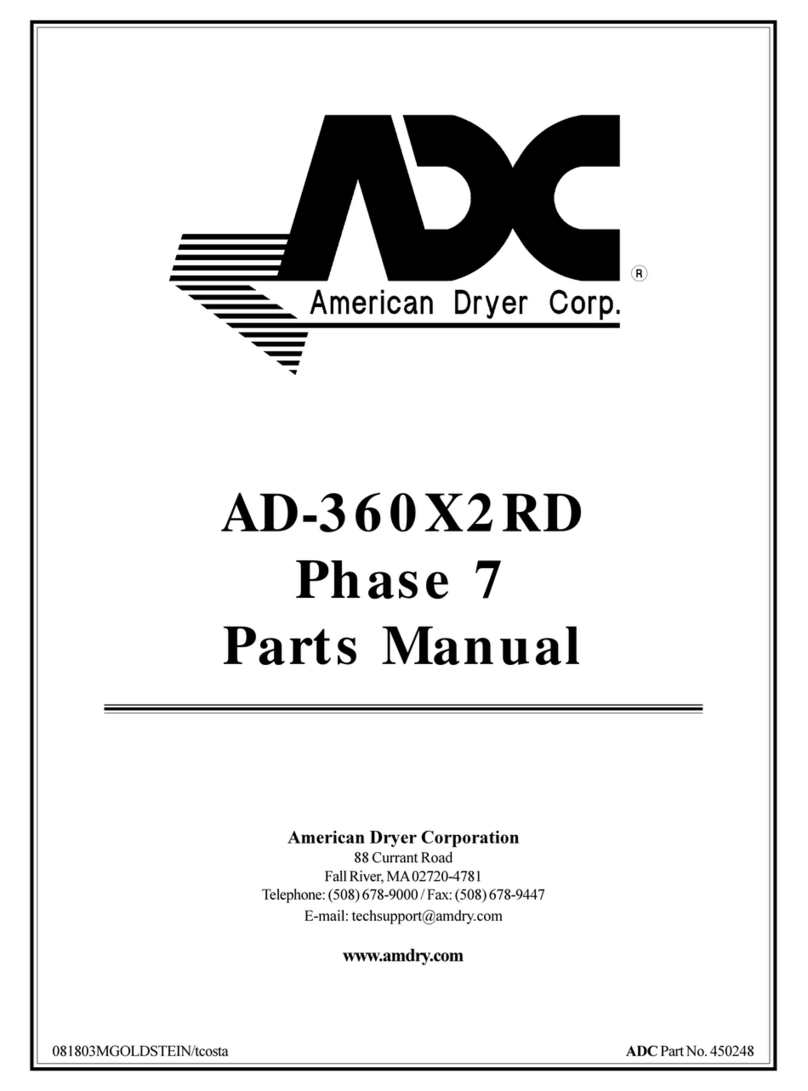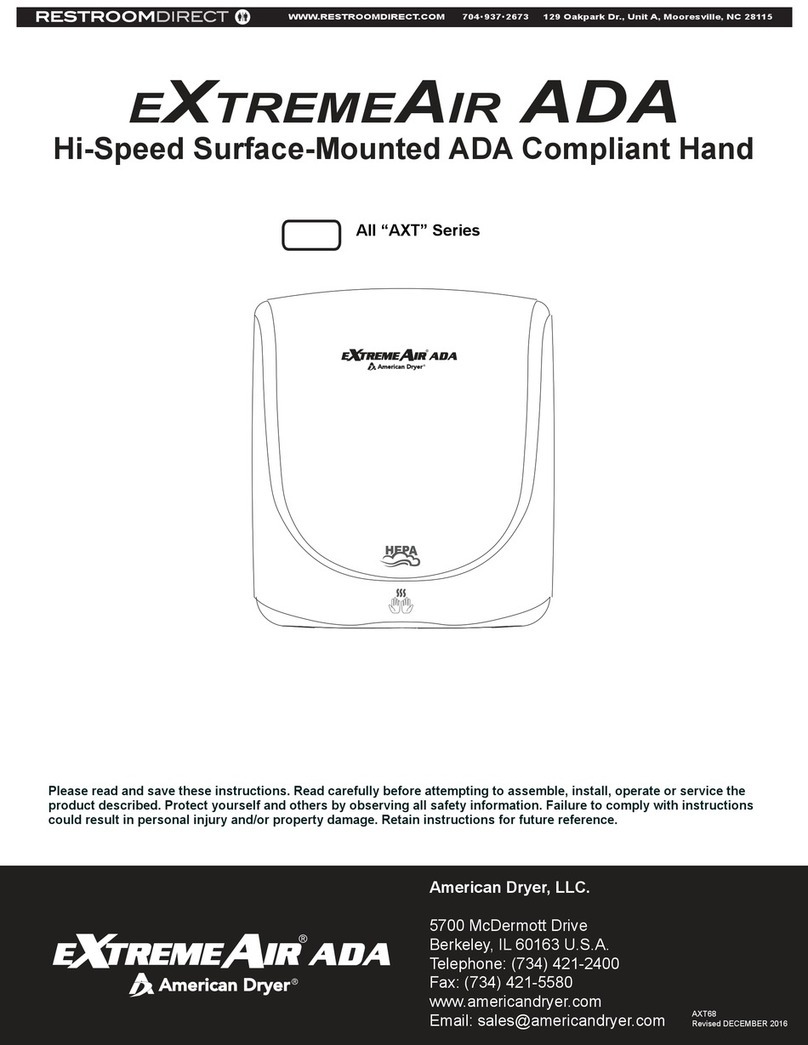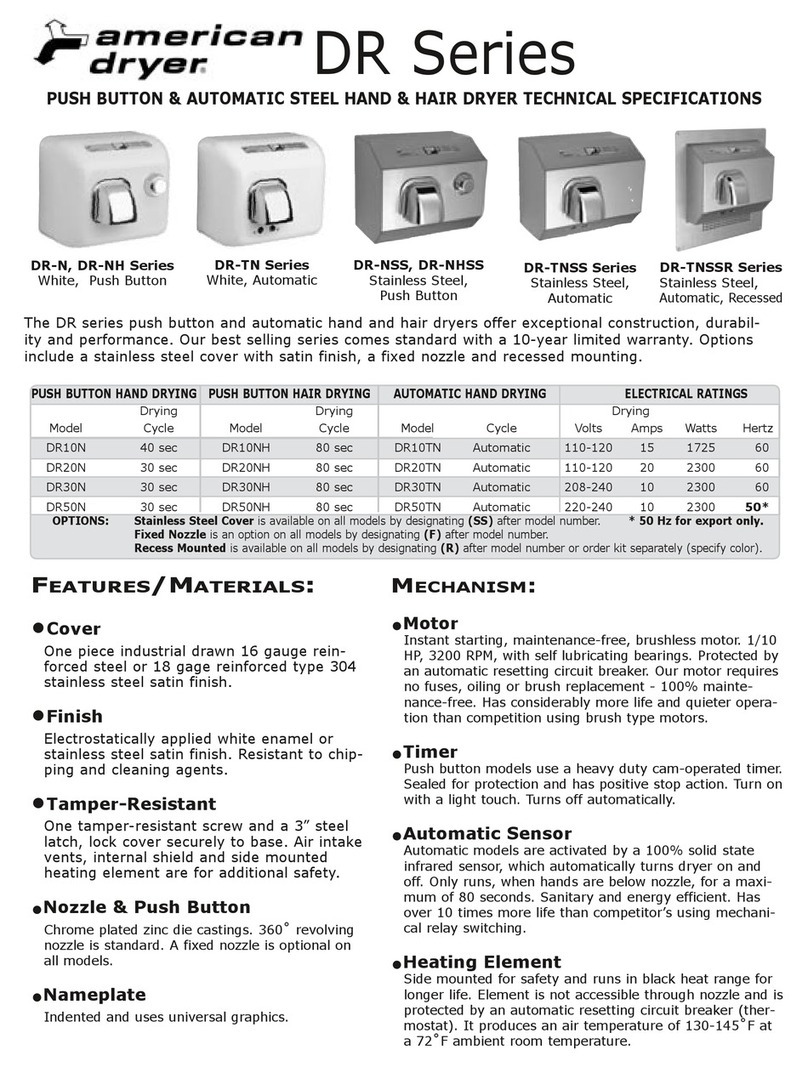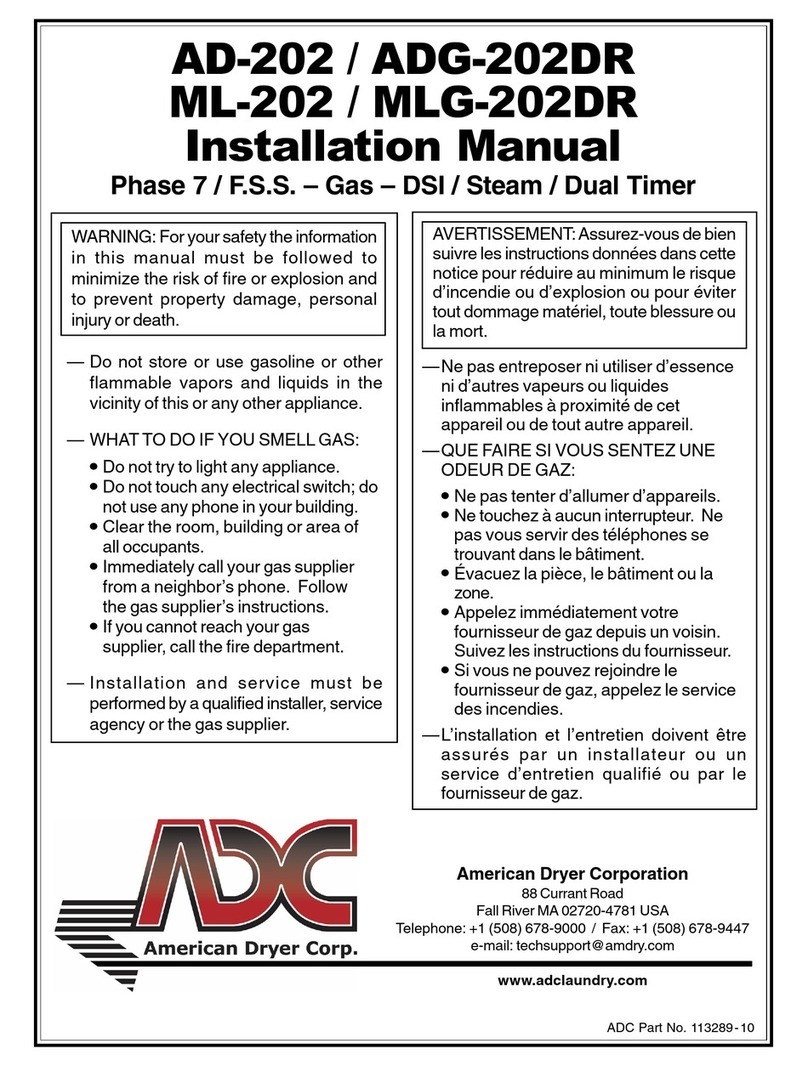
450336-1 www.adclaundry.com 5
Adjustments
7 Days After Installation and Every 6 Months Thereafter
Inspectbolts, nuts,screws (bearing setscrews),nonpermanent
gas connections, and grounding connections (unions, shutoff
valves,and orifices). Motorand drive beltsshouldbe examined.
Cracked or seriously frayed belts should be replaced. Tighten
loose belts when necessary, and check belt alignment.
Complete operational check of controls and valves. Complete
operational check of all safety devices (door switches, sail
switch, burner and lint chamber thermostats).
Lubrication
The motor bearings, idler bearings and tumbler bearings are
permanently lubricated, and no lubrication is necessary.
Installation Requirements ____________
Installation should be performed by competent technicians in
accordancewith local and statecodes. In the absence of these
codes, the installation must conform to applicable American
National Standards: ANSI Z223.1-LATEST EDITION (National
Fuel Gas Code) or ANSI/NFPA NO. 70-LATEST EDITION
(National Electrical Code) or in Canada, the installation must
conformto applicable Canadian Standards:CAN/CGA-B149.1-
M91 (Natural Gas) or CAN/CGA-B149.2-M91 (L.P. Gas) or
LATEST EDITION (for General Installation and Gas Plumbing)
or Canadian Electrical Codes Parts 1 & 2 CSA C22.1-1990 or
LATEST EDITION (for Electrical Connections).
Enclosure, Air Supply,
and Exhaust Requirements
NOTE: The following information is very brief and general.
For a detailed description refer to the installation booklet for
non-coin dryers.
Bulkheads and partitions around the dryer should be made of
noncombustible materials. Allowances should be made for the
opening and closing of the control door and lint door. Also,
allowancesshould bemadein therearfor easeof maintenance.
(Refer to installation manual for recommended distances and
minimum allowances required.)
Whenthe dryeris operating,itdraws inroom air,heatsit, passes
the air through the tumbler, and exhausts it out the building.
Therefore, the room air must be continually replenished from
the outdoors. If the make-up air is inadequate, drying time and
drying efficiency will be adversely affected. Ignition problems
and sail switch “fluttering” problems on gas dryers may result,
and you also could have premature motor failure from
overheating. On electric dryers, premature electric element
failure may result. Air supply must be given careful
consideration to ensure proper performance of each dryer.
IMPORTANT: Make-up air must be provided from a source
free of dry cleaning solvent fumes. Make-up air that is
contaminated by dry cleaning solvent fumes will result in
irreparable damage to the motors and other dryer
components.
Exhaust ductwork should be designed and installed by a
qualified professional. Improperly sized ductwork will create
excessive back pressure, which will result in slow drying,
increased use of energy, and shutdown of the burner by the
airflow (sail) switch.
CAUTION: IMPROPERLY SIZED OR INSTALLED OR
MAINTAINED (CLEANED) EXHAUST DUCTWORK CAN
CREATE A POTENTIAL FIRE HAZARD.
Electrical and Gas Requirements
Electrical Requirements
It is your responsibility to have all electrical connections made
by a properly licensed and competent electrician to assure that
the electrical installation is adequate and conforms to local and
state regulations or codes. In the absence of such codes, all
electrical connections, materials, and workmanship must
conformto theapplicable requirementsof theNational Electrical
CodeANSI/NFPANO. 70-LATEST EDITION or in Canada, the
Canadian Electrical Codes Parts 1 & 2 CSA C22.1-1990 or
LATEST EDITION.
IMPORTANT: Failure to comply with these codes or
ordinances, and the requirements stipulated in this manual,
can result in personal injury or component failure.
It is your responsibility to have all plumbing connections made
by a qualified professional to assure that the gas plumbing
installation is adequate and conforms to local and state
regulations or codes. In the absence of such codes, all
plumbing connections, materials, and workmanship must
conform to the applicable requirements of the National Fuel
Gas Code ANSI Z223.1-LATEST EDITION, or in Canada, the
Canadian Installation Codes CAN/CGA-B149.1-M91 (Natural
Gas)orCAN/CGA-B149.2-M91(L.P.Gas) orLATESTEDITION.
Gas Supply
The gas dryer installation must meet the American National
Standard...National Fuel Gas Code ANSI Z223.1-LATEST
EDITION, or in Canada, the Canadian Installation Codes CAN/
CGA-B149.1M91 (NaturalGas) orCAN/CGA-B149.2-M91 (L.P.
Gas) or LATEST EDITION, as well as local codes and
ordinances and must be done by a qualified professional.
NOTE: Undersized gas piping will result in ignition problems
and slow drying and can create a safety hazard.
The dryer must be connected to the type of gas (natural or
L.P.) indicated on the dryer data label. If this information does
not agree with the type of gas available, do not operate the
dryer. Contact the dealer who sold the dryer or contact ADC.
The gas input ratings shown on the dryer data label are for
elevations up to 2,000 feet (609.6 meters), unless elevation
requirements of over 2,000 feet (609.6 meters) were specified
at the time the dryer order was placed with the factory. The
adjustment for dryers in the field for elevations over 2,000 feet
(609.6 meters) are made by changing the burner orifices. If
this adjustment is necessary, contact the dealer who sold you
the dryer or contactADC.
NOTE: Any burner changes must be made by a qualified
technician.
